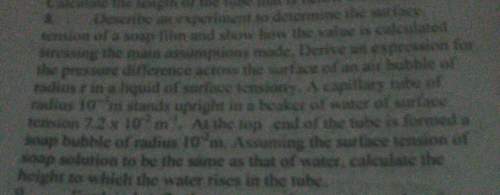According to Huygens's principle, what is the explanation for boundary behaviors?
A.
Each po...

Physics, 04.01.2021 09:10 aekent2003
According to Huygens's principle, what is the explanation for boundary behaviors?
A.
Each point on a wave front acts as a source of secondary waves.
B.
Each point on a wave front stops moving as it progresses.
C.
Each point on a wave front partly reflects and partly refracts the wave.
D.
Most of the points on the wave front stop progressing.

Answers: 2


Other questions on the subject: Physics



Physics, 22.06.2019 12:20, macycj8
A2.0 μf capacitor and a 4.0 μf capacitor are connected in series across a 0.827-kv potential. the charged capacitors are then disconnected from the source and connected to each other with terminals of like sign together. find the voltage across each capacitor.
Answers: 2

Physics, 22.06.2019 15:30, Mhayslett12
To understand the electric potential and electric field of a point charge in three dimensions consider a positive point charge q, located at the origin of three-dimensional space. throughout this problem, use k in place of 14? ? 0. part adue to symmetry, the electric field of a point charge at the origin must point from the origin. answer in one word. part bfind e(r), the magnitude of the electric field at distance r from the point charge q. express your answer in terms of r, k, and q. part cfind v(r), the electric potential at distance rfrom the point charge q. express your answer in terms of r, k, and q part dwhich of the following is the correct relationship between the magnitude of a radial electric field and its associated electric potential ? more than one answer may be correct for the particular case of a point charge at the origin, but you should choose the correct general relationship. a)e(r)=dv(r)drb)e(r)=v(r)rc)e(r)=? dv(r)drd)e(r)=? v(r)r
Answers: 2
You know the right answer?
Questions in other subjects:


Mathematics, 11.03.2020 23:36











